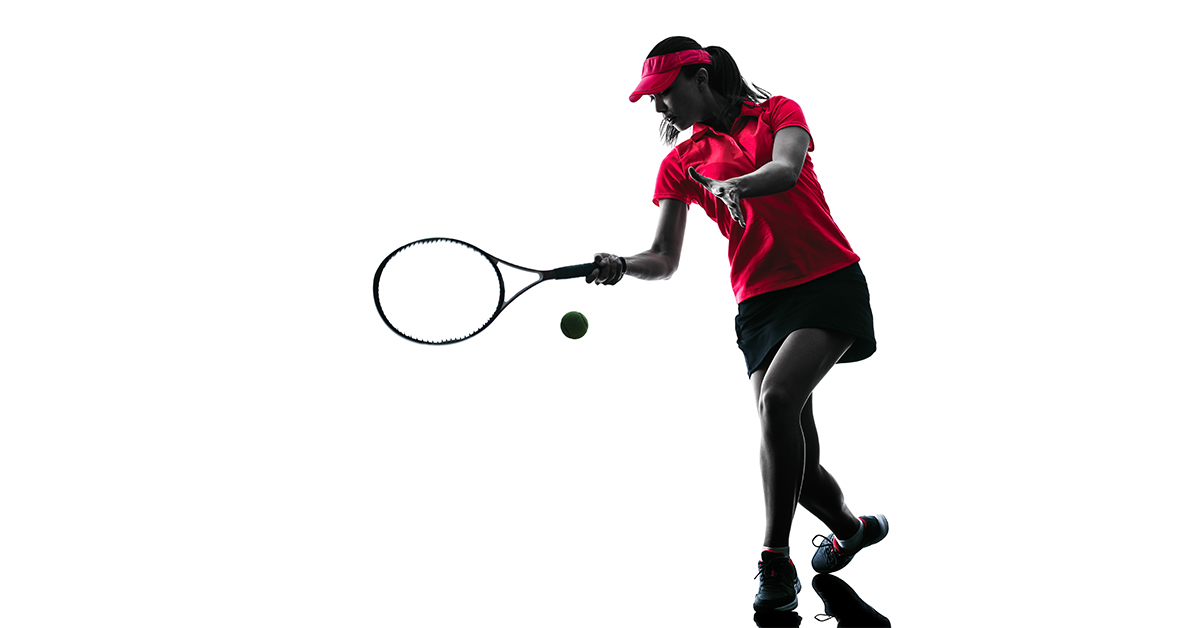
5 Common Tennis Injuries
Tennis can be a very competitive and intense game. Eager new players and even seasoned pros can put their bodies under repetitive stress, which is why most tennis injuries are overuse injuries.
Overuse Injuries
Overuse injuries occur when an action is repeated that puts pressure on tissue, muscles or joints. Some measures you can take to avoid overuse injuries from playing tennis include taking time to hydrate, stretch and warm up, taking part in strength and endurance training, and making sure to use proper equipment.
Rotator Cuff Tendonitis
The rotator cuff is made of muscles and tendons that come together to cover the head of the humerus. These tendons attach the humerus to the shoulder blade and plays a large part in your ability to lift and rotate your arm. Because of the shoulder movements required in playing tennis, overuse injuries like rotator cuff tendonitis and rotator cuff bursitis can be common if care is not taken to avoid overuse.
Rotator cuff tendonitis occurs when the rotator cuff tendons become irritated from overuse. Symptoms vary, but include inflammation, pain, and limited range of motion. In some cases, there will be acute shoulder pain when raising the arms over the head, laying on the affected shoulder, or reaching backwards. These symptoms can be caused by a variety of conditions, including shoulder osteoarthritis.
Rotator Cuff Bursitis
Bursitis occurs in the rotator cuff when the bursa, a fluid-filled sac above the rotator cuff becomes inflamed due to irritation. The bursa normally acts as a cushion between parts of the shoulder, so its inflammation often contributes to irritation of other parts of the shoulder. Both rotator cuff tendonitis and rotator cuff bursitis can cause serving and other overhand motions required in tennis to be painful.
Tennis Elbow
Lateral epicondylitis, known commonly as tennis elbow, is a painful condition caused by overuse of the elbow. This condition is often seen in people who play sports that require a racquet, like tennis, or other activities that involve repetitive use of the elbow, forearm, or wrist. This condition can also occur from trauma to the outside of the elbow or from the normal wear-and-tear that occurs with aging.
Symptoms of tennis elbow include pain and tenderness on the outside of the elbow. When the wrist is used, the pain increases. This can make everyday actions from brushing teeth to shaking hands a painful affair. Your physician will review your medical history and complete a physical exam in order to determine if you have this condition.
Muscle Strains
Muscle strain is what occurs when a muscle is pushed past its limit. Severe muscle strain can cause the muscle to pull, or worst case, can cause a muscle tear. Muscle strains are graded according to severity, from a mild and relatively quick healing grade 1 strain to a grade 3 strain, which is a complete muscle tear. Strains happen when a muscle or tendon is suddenly stretched beyond its normal capacity, whether due to an impact or a sudden load. Tennis players are especially susceptible to muscle strain in the hamstrings and calves due to the quick bursts of movement they must make on the court.
Stress Fractures
Stress fractures are another overuse injury that can affect tennis players. This type of injury usually occurs due to muscle fatigue from rapidly or substantially increasing the amount or intensity of time spent playing tennis. Other causes can include changes in playing surface, such as switching from a soft court to a hard court, or using improper equipment, like wearing shoes that are worn out. Stress fractures occur when muscles are unable to properly handle the added stress or shock. This can result in the muscle transferring some of the added stress to the bone, creating tiny cracks in the bone. These small cracks are called stress fractures. Most stress fractures occur on the lower half of the body, especially in the lower legs and feet. However, due to the stress put on the arms in tennis, stress fractures may occur in the upper extremities as well.
